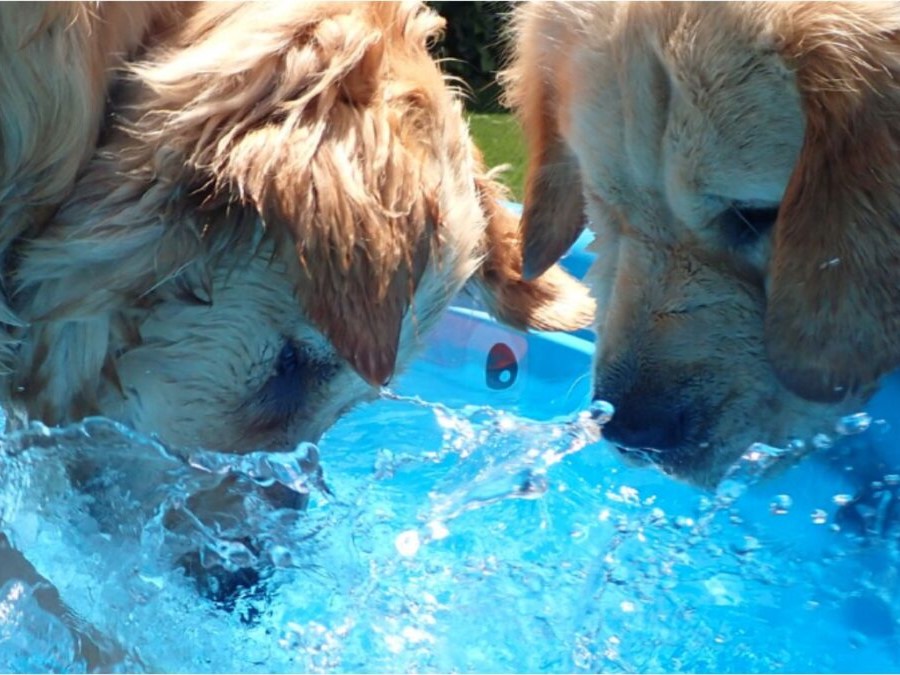During the hot summer months pets can suffer from the same problems as humans including overheating, dehydration and sunburn.
As important as physical exercise is for dogs, every summer day dogs are taken to veterinary centres suffering from heatstroke after a walk. This can be fatal and is avoidable for the most part.
As a general rule, walking your dog when the temperature is below 20C is ideal. Most dogs are comfortable at temperatures between 15-25°C, but this is very much dependent on their age, breed, size, coat length, amount of exercise they’re engaging in, individual health and fitness.
If and when our dog stops on the lead during walks, and wants to lie down to rest, we must listen to their need and allow them to do so.
Smaller dogs, long haired dogs and dogs which are brachycephalic (French bulldogs, pugs, English bulldogs etc) are also more prone to heat stroke. When going on walks, regularly provide fresh clean water for your dog. Don’t allow time off lead if your dog is likely to zoom around as this can cause them to overheat, heightening the risk of them developing heatstroke.


In hot weather, dogs can still overheat and get sunburnt, even on short walks in the shade or early/late in the day. Apply pet-safe sun cream to exposed areas like the nose, ears, and pads, especially for lighter or thinner-coated breeds and dogs with pink noses.
Only take dogs to the beach if you can provide shade and plenty of fresh water. Rinse them thoroughly afterward to remove sand and salt, which can cause skin irritation. Wash under their collar or harness and clean these items at home.
To avoid long walks in the sun, try mental enrichment games like snuffle mats to keep dogs engaged and relaxed indoors. Find our how-to video on making a snuffle mat HERE.
Keeping cool indoors
There are many ways to keep dogs cool indoors. Shaving them for summer may seem helpful, but fur provides insulation and sun protection, increasing the risk of sunburn and heatstroke. Regular grooming is essential year-round—our onsite groomers, Short Bark and Sides, are here to help.
Cooling bandanas, coats, and frozen treats like a frozen Kong, pig ears, or kibble in ice water can help. Placing damp towels on the floor and adding ice cubes to water bowls also keeps dogs cool.
Warm dogs may become restless searching for a cooler spot—let them. To manage excess energy, offer cooling boredom busters like frozen cabbage for destructive chewers or frozen apple for relaxed chewers.

Overheating signs to watch out for
- Excessive panting and being short of breath
- Excessive drooling
- Changes in gum colour or tongue (bright or dark red)
- Elevated body temperature
- Increased pulse and heartbeat
- Excessive thirst
- Disorientation, stumbling or weakness
- Vomiting
If you begin to recognise signs of overheating in your dog, you should take immediate action to cool them down.
Move them somewhere cool with a draught and out of direct sunlight. Wet their coat with cool (not cold) tap water, offer them a small amount of water to drink and cool them with a fan or cold towels. Take them to a vet and use the air-conditioning on the journey.
Never give your pet ice if they are showing signs of heat stroke and NEVER encourage to swim. The shock of ice or being in cold water could prove fatal.
If your dog is unconscious, do not delay and take them to a vet right away.
Car Journeys with your dog, cat or small pet
It is important not to conduct any unnecessary car journeys. When it is 22 degrees outside, temperatures can quickly rise to 47 degrees in cars, outbuildings, sheds and caravans and this can be deadly for your pet. Even if your car has air conditioning, keep journeys to a minimum and limit to important events such as vet visits.
Small pets and cats should be securely restrained in a pet carrier while travelling. Water bowl attachments are available to keep them hydrated on the move.
Never leave a pet in the car unattended in hot weather, especially if they are prone to separation anxiety because they will get even hotter due to stress and adrenaline. All pets can die in hot cars and as it can happen very quickly.


